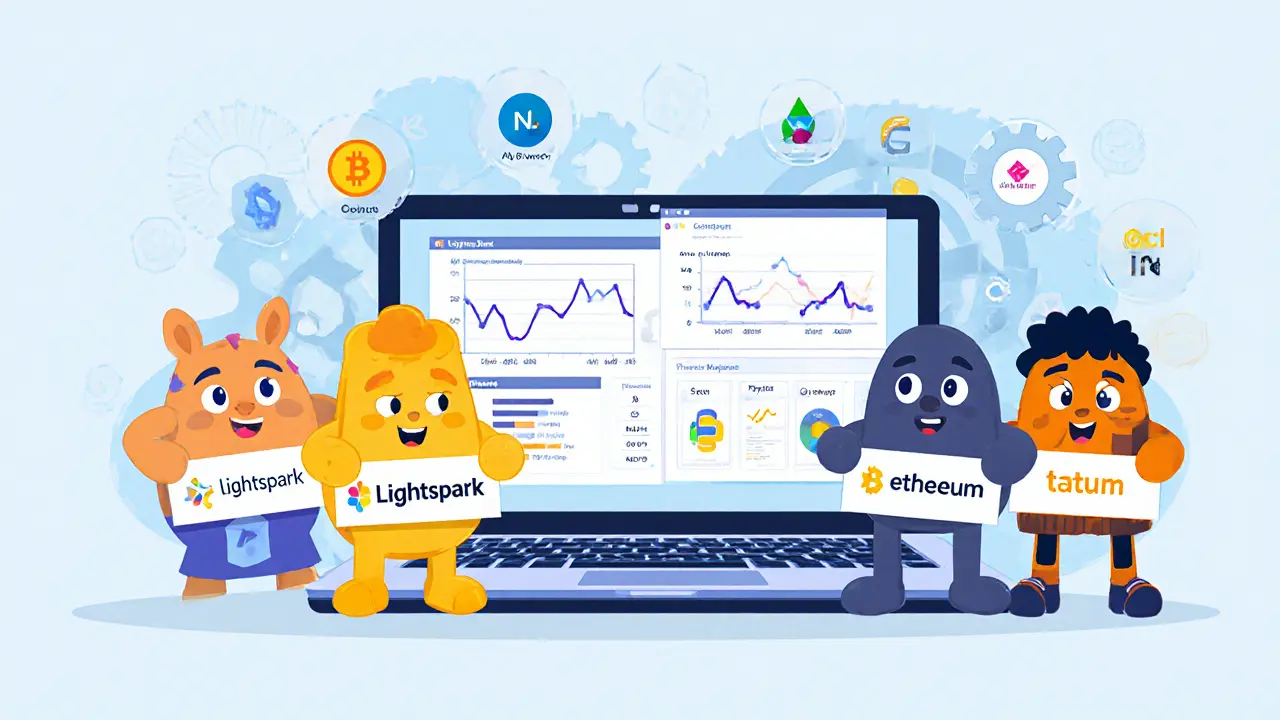Transaction Fee Estimator
Estimated Fees
Fast
0.00
sat/vB | Gwei
PriorityStandard
0.00
sat/vB | Gwei
BalancedEconomical
0.00
sat/vB | Gwei
Cost-EffectiveWhen you send a crypto payment, the fee you pay can mean the difference between a fast confirmation and a transaction that sits in limbo for hours. Transaction fee estimation tools are the secret sauce that helps users and developers hit the sweet spot - paying just enough to get in the next block without over‑paying.
What Are Transaction Fee Estimation Tools?
Transaction fee estimation tools are predictive software services that calculate the optimal fee for a blockchain transaction. They ingest real‑time network congestion data, mempool snapshots, and historical confirmation times to suggest a fee level measured in units like satoshis per virtual byte (sat/vB) for Bitcoin or gas price for Ethereum. The goal is simple: ensure the transaction is confirmed when you need it, while keeping costs low.
How They Work - Core Algorithms
All fee estimators share three basic steps:
- Collect live data - usually the mempool, which holds unconfirmed transactions.
- Analyze recent blocks - look at the fees that actually got confirmed in the last few minutes.
- Predict the minimum fee for the desired confirmation time window.
Traditional tools use statistical models like moving averages or exponential smoothing. Modern solutions increasingly rely on machine learning. The academic FENN framework (Fee Estimation Neural Network) combines mempool depth, transaction size, and recent block fee histograms into a neural net that updates every block, delivering sub‑10% error rates in most conditions.

Key Players and Their Offerings
Several providers have turned fee estimation into a commercial API. Below is a quick side‑by‑side look at the most cited services as of 2025.
| Provider | Supported Networks | Estimation Model | Tier Options | Developer Experience |
|---|---|---|---|---|
| Lightspark | Bitcoin, Lightning | mempool‑based analytics + custom ML | Fast / Standard / Economical | Python & Node SDK, 2‑hour integration |
| Cobo | Bitcoin, Ethereum, BSC, Polygon | Hybrid analytical + ML (FENN‑inspired) | Low / Medium / High priority | REST API, detailed docs, 24/7 support |
| CryptoAPIs | 20+ chains (incl. Bitcoin, Ethereum, TRON) | Statistical averages with real‑time adjustments | Fast / Standard / Cheap | Multiple SDKs, rate‑limit friendly |
| Tatum | Bitcoin, Ethereum, Binance Smart Chain, Solana | Hybrid (historical + mempool) + optional AI add‑on | Tiered based on confirmation urgency | Swagger UI, quick‑start CLI |
Notice the split between single‑chain specialists (Lightspark) and multi‑chain platforms (CryptoAPIs, Tatum). Your choice should reflect both the networks you need and how much control you want over the underlying model.
Choosing the Right Tool for Your Use‑Case
Here are four practical scenarios and the criteria that matter most:
- Mobile wallet for casual users: You need a lightweight API that delivers fast, standard, and cheap tiers without extra authentication steps. CryptoAPIs’ tiered pricing and broad network list fit well.
- High‑frequency trading bot: Latency is king. Look for providers that guarantee sub‑second updates and offer a “fast” tier with <10% error during congestion. Cobo’s 24/7 support and dedicated WebSocket endpoint are a good match.
- Lightning Network node operator: Bitcoin‑only, mempool‑intensive logic. Lightspark’s custom ML tuned for Lightning gives the best cost‑per‑transaction ratio.
- Enterprise payment gateway: Multi‑chain coverage, compliance, and SLA guarantees are non‑negotiable. Tatum’s enterprise contracts and SDKs across languages provide the needed robustness.
When evaluating, ask these questions:
- Does the API support the exact chain_id you need?
- What is the update frequency - per block, per minute, or real‑time streaming?
- Are there clear tier definitions (fast, standard, cheap) and how do they map to confirmation time expectations?
- What are the rate limits and cost per 1,000 requests?

Implementation Basics - From API Call to Custom Model
If you just need a quick plug‑and‑play solution, follow these steps:
- Sign up for the provider’s developer portal and retrieve an API key.
- Install the official SDK (most offer Python, JavaScript, and Java). Example for Python:
pip install cobo-sdk import cobo client = cobo.Client(api_key='YOUR_KEY') fee = client.get_fee(chain='ethereum', request_type='transfer') print(fee) - Parse the response - you’ll typically receive gas price (gwei) for Ethereum or sat/vB for Bitcoin.
- Include the fee in your signed transaction before broadcasting.
For teams that want tighter control, building a custom model follows a similar data pipeline:
- Consume the public mempool feed via a websocket (e.g., wss://btc-mempool.example.com).
- Store recent block data - fee, size, confirmation time - in a time‑series database.
- Train a regression or neural‑network model (the FENN framework uses a two‑layer LSTM). Training can take 1‑2 weeks on a modest GPU.
- Deploy the model behind a REST endpoint that your wallet calls.
Custom models give the highest accuracy during extreme congestion but require ongoing maintenance.
Common Pitfalls and Pro Tips
Even the best estimators can mislead if you ignore the context.
- Stale data. Fees can swing 200% within minutes during a Bitcoin “weekend surge.” Cache results for no longer than 30 seconds.
- Ignoring transaction type. Contract calls on Ethereum need more gas than simple ETH transfers. Always pass the correct request_type (transfer vs. contract call).
- Over‑relying on a single tier. Offer users a “choose your speed” option. In many wallets, the “standard” tier often lands in the next block, while “fast” can guarantee under 2‑minute confirmation during high load.
- Neglecting EIP‑1559 dynamics. After the 2021 upgrade, Ethereum fees consist of a base fee (burned) plus a tip (priority fee). Estimators that only give “gas price” without splitting these components can cause overpayment.
- Rate‑limit surprises. Heavy‑volume trading bots can hit provider caps. Negotiate higher limits or implement exponential back‑off.
Pro tip: combine two providers and take the median of their predictions. This simple ensemble often halves the error during spikes.
Frequently Asked Questions
How often should I refresh the fee estimate before broadcasting?
Refresh at least once per block (≈10minutes for Bitcoin, 12seconds for Ethereum). If your wallet holds the transaction for longer than that, request a new estimate to avoid stale fees.
Do fee estimation tools work on Layer‑2 solutions like Arbitrum?
Yes. Providers such as Cobo and Tatum have added Arbitrum, Optimism, and Polygon support. The APIs return the L2 gas price, which is usually a fraction of Ethereum’s L1 cost.
Is a machine‑learning model always better than a statistical one?
Not necessarily. ML shines during volatile spikes but adds complexity and requires continuous retraining. For most everyday use‑cases, a well‑tuned statistical model provides sufficient accuracy with lower overhead.
What’s the difference between "base fee" and "tip" in Ethereum’s fee calculation?
The base fee is the protocol‑determined minimum per‑gas price that gets burned. The tip (or priority fee) goes to the block proposer as an incentive for faster inclusion. Your total fee = gas×(base+tip).
Can I use a fee estimator without an API key?
Some open‑source projects provide public endpoints, but they often have strict rate limits and no SLA. For production environments, a paid API key ensures reliability and support.


Andrew Lin
Yo, pay the damn fee right away.